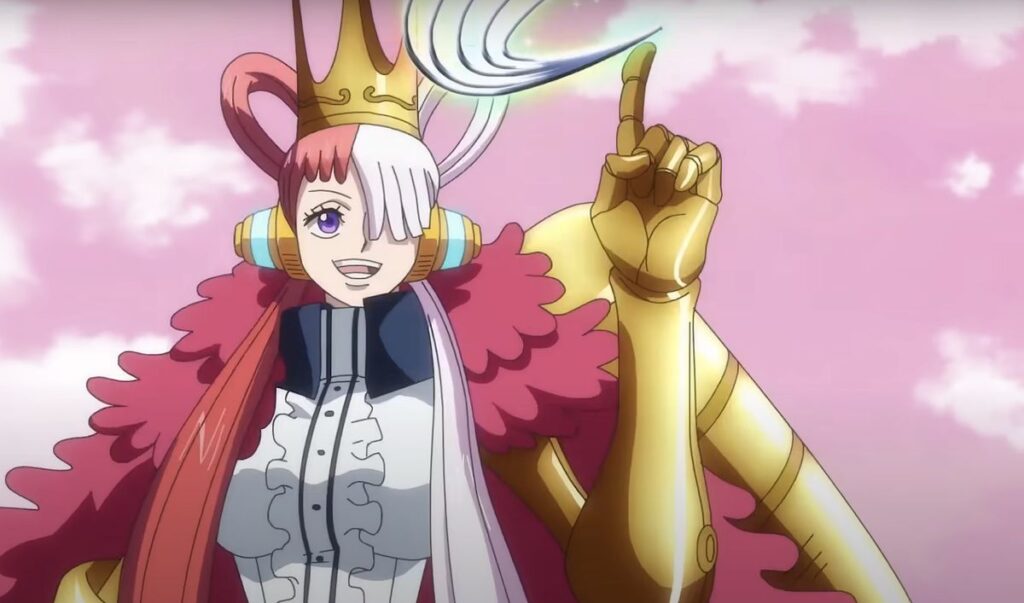It’s kind of fascinating that most of the more than 1,100 characters introduced in the One Piece franchise fall into two groups. The World Government — the tyrannical, repressive global regime that dominates the franchise’s setting — naturally causes most of the characters to fall on one side of the line or another. Some people support it, like its military and the untouchable, despotic aristocracy of the World Nobles. Others are its enemies, like the pirates who number among the series’ protagonists. It’s a defining division running through One Piece, and it’s such a simple split that it doesn’t sound like enough to keep a story going for 25 years, across 103 manga volumes (and counting!), and more than 1,000 anime episodes.
But there’s so much variation among those two groups. The pro-World Government characters include the secret government assassination and intelligence organizations CP9 and CP0, the sellout pirates known as the Seven Warlords of the Sea, the Navy, and much more. On the other end of the spectrum are pirates of all creeds and dispositions. Some want to rule the world. Others want freedom for themselves and their chosen families. Some people just want to see the world burn.
Ultimately, though, the world of One Piece does seem to be divided into two tribes — until now. The latest addition to the series, the feature film One Piece Film: Red, which opens in American theaters on Nov. 4, introduces a third, equally complex camp that’s opposed to both the World Government and piracy. That faction has enough power to convince people on both sides that it’s a force to be reckoned with.
What’s most fascinating about that group, though, is that it’s made up of one person.
Image: Toei/Crunchyroll
The new arrival, Uta, is the daughter of Shanks, one of One Piece’s most powerful, best-known pirates. She’s also a lifelong friend of series protagonist Luffy. She happens to be the most popular singer in the world. And we’re just learning of her existence for the first time in Red. Given all that, and the fact that her name is literally the Japanese word for “song,” fans fed up with shonen tropes could be forgiven for dismissing Uta from the get-go.
But the character is actually something fans have never seen before on such a scale in the OP-verse: someone who acts and fights on behalf of regular, non-superpowered people. The Revolutionary Army founded and led by Luffy’s dad, Monkey D. Dragon, might seem like they’re about basically the same thing, but opposing the slavery-supporting World Nobles and actively fighting for the little people are two different things. Uta’s mission is to free people from suffering. Her drive to guarantee their happiness, and her minimal moral qualms about how she does it, helps give her a fascinating identity of her own.
Through Uta, it also becomes clear how dystopian the world of One Piece can feel for anyone without a Devil Fruit superpower, training in the spiritual power of Haki, or just their own pirate crew. Civilians around the world are killed all the time by pirates, Marines acting monstrously within the law, or World Nobles who are legally allowed to make regular people their slaves on a whim. Uta sets out to save those people with the power of music.

Image: Toei/Crunchyroll
Musicals aren’t universally popular, especially when a non-musical franchise tests the musical waters. But the songs in One Piece Film: Red don’t feel shoehorned in, since Uta is a singer with music-based powers. This allows the story to expand fans’ understanding of the OP-verse, while also naturally weaving in some stunning musical numbers that take full advantage of the medium of animation. Each song is a gigantic spectacle, whether a given number is J-pop or R&B.
The songs are all performed by musical wunderkind Ado, a 20-year-old who debuted in 2020 with the youth-rebellion song “Usseewa,” which roughly translates to “Shuddup.” That song’s release set off a bit of pearl-clutching in Japan, with parents worrying about how such “provocative” lyrics would affect their children. Red might just change those people’s opinion of Ado, given its wide range of non-explicit, touching, and beautifully performed musical centerpieces.
The best way to describe Ado’s singing is “unbelievable.” It’s literally hard to believe someone so young can have such an amazing musical and emotional range. She can so clearly convey joy and hope in uplifting songs like “New Genesis,” or bring across visceral pain and despair in the melodic hard-rock piece “Tot Musica.”
Ado’s performance is a big reason why Uta might go down in anime history as the greatest One Piece movie character ever. But equal praise goes to director Goro Taniguchi and writer Tsutomu Kuroiwa, who’ve created a wonderfully complex character. In the beginning, Uta looks like a typical hero type who fights for what she believes is right, similar to Luffy. In fact, Red is very much an Uta-and-Luffy escapade, with the rest of the Straw Hat Pirates being relegated to little more than cameos. But there’s a sinister streak to the way Uta goes about her mission.
Uta has her own idea of how to heal the world, and she pursues it relentlessly without any regard for her well-being, or other people’s consent. Her actions are eerily reminiscent of those of CP9/CP0 agent Rob Lucci, who makes a brief appearance in Red as if to remind us that we’ve seen this kind of behavior before, from one of Uta’s supposed enemies. Uta never does anything as horrific as massacring 500 hostages to remove a pirate crew’s leverage, but her insistence that she is in the right and others just need to go along with her isn’t that far off from Lucci’s devotion to “absolute justice.”

Image: Toei/Crunchyroll
But for all those nods to One Piece’s past, One Piece Film: Red is entirely accessible to newcomers. Even people who’ve never seen a single episode of the show or read any of the manga can still follow and enjoy Red. Some of the details will fly over their heads, but the lively story and engaging songs should keep them entertained. (Even if we never do get to hear Luffy sing.)
Longtime One Piece fans, though, are in for something magical. Uta potentially represents a huge shift in the balance of power across One Piece. While the movie’s events haven’t been confirmed as series canon, Uta herself appears in chapter 1055 of the manga, meaning that she is part of the main plot. If her character and motivation are carried over to the story’s official continuum, it could mean that the most exciting One Piece stories are still ahead of us.
One Piece Film: Red debuts in U.S. theaters on Nov. 4.

